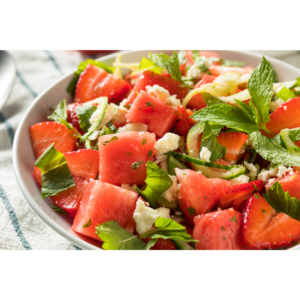
by gdadmin | Oct 8, 2024 | Uncategorized
Every year on October 10th, the world unites to observe World Mental Health Day, raising awareness about mental health issues and advocating for the global improvement of mental wellbeing. In recent years, mental health has become a critical issue in Canada, with an increasing number of individuals struggling with anxiety, depression, stress, and other mental health disorders. As a naturopathic wellness practitioner, I believe it’s crucial to recognize the significance of this day, not just as a time for awareness, but as an opportunity to discuss effective, holistic approaches to mental health care.
In this post, we will dive into why World Mental Health Day is important, explore recent studies on mental health cases in Canada, and discuss naturopathic solutions that can support mental health recovery and resilience.

Why World Mental Health Day Matters
World Mental Health Day is more than just a date on the calendar—it’s a global movement for mental health advocacy. According to the World Health Organization (WHO), the theme for 2024 is “Mental health is a universal human right”, emphasizing the idea that everyone deserves access to mental health care, regardless of their background, circumstances, or geography.
Raising awareness on this day:
- Reduces Stigma: One of the greatest barriers to mental health treatment is stigma. World Mental Health Day helps to normalize conversations about mental health and encourages people to seek the help they need without fear of judgment.
- Promotes Early Intervention: Awareness leads to early detection. Educating the public about signs and symptoms of mental health challenges can empower individuals to seek treatment before the condition escalates.
- Encourages Global Unity: Mental health issues affect everyone, everywhere. This day brings people together across cultures and nations to advocate for better mental health resources and solutions.
The Current State of Mental Health in Canada
Mental health has been a growing concern in Canada, with significant rises in mental health disorders, particularly during and after the COVID-19 pandemic. Recent statistics underscore the urgency of addressing this issue:
- Mental Health Cases Rising: According to the Canadian Mental Health Association (CMHA), 1 in 5 Canadians experience a mental health problem or illness every year. However, due to stigma and a lack of resources, many people do not receive adequate care.
- Youth in Crisis: The mental health of young people is especially concerning. A report from Children First Canada states that suicide is the second leading cause of death among Canadian youth aged 15 to 24. The pandemic also increased rates of depression, anxiety, and substance abuse among this age group.
- Increased Anxiety and Depression: According to the Statistics Canada Mental Health Survey in 2023, 25% of Canadians aged 18 and older reported experiencing high levels of anxiety, while 18% reported significant depressive symptoms. These numbers have nearly doubled since 2019, demonstrating a substantial rise in mental health concerns.
While conventional treatments such as therapy and medications can be effective, they often overlook the body-mind connection and the potential for natural interventions. This is where naturopathic solutions come into play.
Naturopathic Approaches to Mental Health

Naturopathic medicine offers a holistic and comprehensive approach to mental health. It focuses on treating the whole person—body, mind, and spirit—by identifying the root cause of mental health issues and using natural, non-invasive therapies to restore balance. Here are some of the most effective naturopathic solutions for supporting mental health:
1. Nutritional Support for Mental Health
What we eat plays a significant role in how we feel mentally. Nutritional deficiencies are often linked to mental health issues such as anxiety, depression, and mood disorders.
- Omega-3 Fatty Acids: Studies show that omega-3s, found in foods like fish, flaxseed, and walnuts, have anti-inflammatory properties that support brain health and reduce symptoms of depression and anxiety.
- B-Vitamins: B-vitamins, particularly B6, B9 (folate), and B12, are crucial for brain function. Deficiencies in these vitamins are linked to mood imbalances, brain fog, and cognitive decline. A 2020 study published in Frontiers in Psychiatry found that B-vitamin supplementation improved mood and mental clarity in individuals with depression.
- Magnesium: Known as the “anti-stress mineral,” magnesium is essential for relaxing the nervous system. Low magnesium levels have been linked to anxiety, sleep disturbances, and increased stress. Foods like leafy greens, nuts, and seeds are excellent sources of magnesium.
A naturopathic approach involves evaluating the individual’s diet and supplementing any nutritional gaps that could be contributing to mental health issues.
2. Herbal Medicine for Emotional Balance
Herbs have been used for centuries to support emotional wellbeing. Some herbs work by calming the nervous system, while others help balance neurotransmitters like serotonin and dopamine.
- Ashwagandha: This adaptogenic herb helps reduce cortisol (the stress hormone) and balances mood by supporting the adrenal glands. Studies have shown it can significantly reduce anxiety and improve overall wellbeing.
- St. John’s Wort: Known for its antidepressant properties, St. John’s Wort has been used to treat mild to moderate depression. It helps increase serotonin levels in the brain, supporting a positive mood.
- Lavender: Lavender is widely known for its calming effects. It can help reduce anxiety, improve sleep quality, and promote relaxation. Lavender essential oil is particularly effective when used in aromatherapy or as a calming tea.
3. Mind-Body Practices

A growing body of research supports the integration of mind-body techniques to improve mental health. Practices that connect the mind and body can lower stress, enhance emotional resilience, and improve mood.
- Meditation and Mindfulness: Mindfulness and meditation are scientifically proven to reduce anxiety, depression, and stress. A 2021 study published in JAMA Psychiatry found that meditation can be as effective as medication in treating anxiety disorders.
- Yoga: Yoga combines physical movement with breath control, helping to calm the nervous system and improve mental clarity. Regular practice has been shown to reduce symptoms of depression and anxiety while promoting relaxation.
- Deep Breathing and Relaxation Techniques: Simple techniques like diaphragmatic breathing (deep belly breathing) help reduce stress by activating the parasympathetic nervous system, often referred to as the “rest and digest” system.
4. Addressing Sleep for Mental Health
Sleep is foundational to mental health. Many individuals struggling with mental health disorders also experience insomnia or poor-quality sleep, which can exacerbate symptoms of anxiety and depression.
- Sleep Hygiene: Creating a healthy sleep routine (also known as sleep hygiene) is crucial. This includes going to bed at the same time each night, creating a calming pre-sleep routine, and avoiding stimulants like caffeine or screen time before bed.
- Natural Sleep Aids: Naturopaths may recommend natural sleep aids such as melatonin or valerian root to support deep, restorative sleep. Lavender essential oil and magnesium can also be helpful in creating a calming sleep environment.
5. Lifestyle Modifications
A naturopathic approach to mental health also involves lifestyle modifications that reduce stress and support emotional balance.
- Exercise: Regular physical activity boosts endorphins and serotonin, which can naturally improve mood. A 2022 study from The Canadian Journal of Psychiatry found that even moderate exercise three times a week significantly improved depressive symptoms in participants.
- Connection and Community: Loneliness and isolation can worsen mental health. Social connection, whether through friends, family, or support groups, is a vital component of emotional wellness.
Conclusion: Supporting Mental Health the Natural Way
World Mental Health Day reminds us of the importance of taking care of our mental health. In Canada, mental health cases are on the rise, making it even more crucial to find effective, sustainable solutions. While conventional medicine offers important treatments, naturopathic approaches provide a holistic, individualized path to mental health recovery.
By incorporating nutritional support, herbal medicine, mind-body practices, sleep improvements, and lifestyle modifications, naturopathy empowers individuals to take control of their mental health in a natural and sustainable way. This World Mental Health Day, let’s continue to raise awareness, break the stigma, and explore holistic approaches that honor the mind-body connection.
If you or someone you know is struggling with mental health, consider naturopathic care as part of a comprehensive wellness plan. Together, we can create lasting change for better mental and emotional wellbeing.

by gdadmin | Sep 17, 2024 | Uncategorized
In today’s fast-paced world, maintaining optimal thyroid health is more crucial than ever. The thyroid gland, a small butterfly-shaped organ located at the base of your neck, plays a vital role in regulating metabolism, energy levels, and overall hormonal balance. When it’s not functioning properly, it can affect every aspect of your well-being. As a naturopathic doctor, I’m here to offer guidance on nurturing your thyroid health through natural and holistic approaches.

Understanding Thyroid Health
The thyroid gland produces hormones that regulate many bodily functions, including metabolism, heart rate, and body temperature. Common thyroid conditions include hypothyroidism (underactive thyroid), hyperthyroidism (overactive thyroid), and autoimmune thyroid diseases such as Hashimoto’s thyroiditis and Graves’ disease. Symptoms can vary widely but often include fatigue, weight changes, mood swings, and digestive issues.
Naturopathic Approaches to Supporting Thyroid Health
-
Balanced Nutrition:
- Incorporate Iodine-Rich Foods: Iodine is essential for thyroid hormone production. Include foods such as seaweed, fish, and iodized salt in your diet.
- Selenium and Zinc: These minerals support thyroid function and hormone synthesis. Good sources include Brazil nuts, sunflower seeds, and pumpkin seeds.
- Anti-inflammatory Diet: Chronic inflammation can impact thyroid health. Focus on anti-inflammatory foods such as leafy greens, berries, and fatty fish rich in omega-3s.
-
Herbal Support:
- Ashwagandha: This adaptogenic herb helps balance thyroid hormones and reduce stress, which can support overall thyroid function.
- Bladderwrack: A type of seaweed known for its iodine content, which can be beneficial for thyroid health.
-
Optimize Gut Health:
- Probiotics: A healthy gut microbiome supports nutrient absorption and hormone balance. Include fermented foods like sauerkraut, kefir, and kombucha in your diet.
- Digestive Enzymes: These can help with nutrient breakdown and absorption, which is crucial for thyroid health.
-
Manage Stress:
- Mind-Body Practices: Yoga, meditation, and deep breathing exercises can help manage stress levels and support your thyroid.
- Adequate Sleep: Prioritize good sleep hygiene as poor sleep can negatively impact thyroid function and overall health.
-
Environmental Considerations:
- Reduce Exposure to Endocrine Disruptors: Limit contact with chemicals and toxins found in plastics and personal care products, which can interfere with thyroid function.
-
Regular Exercise:
- Stay Active: Engaging in regular physical activity supports metabolism and helps maintain healthy thyroid function. Aim for a mix of cardiovascular exercise, strength training, and flexibility exercises.
Take Charge of Your Thyroid Health Today!
Each individual’s thyroid needs are unique. It’s important to work with a healthcare provider to tailor these recommendations to your specific condition and lifestyle. Comprehensive testing and personalized treatment plans can provide the best results.
If you have concerns about your thyroid, consider scheduling a consultation to explore a personalized plan that’s right for you.
For more information or to schedule a consultation, please contact our office.

by gdadmin | Sep 3, 2024 | Uncategorized
Fibromyalgia is a complex and often misunderstood condition characterized by widespread musculoskeletal pain, fatigue, sleep disturbances, and cognitive difficulties, commonly referred to as “fibro fog.” Affecting millions of people worldwide, fibromyalgia can severely impact daily life, making even simple tasks feel overwhelming. As we delve into September’s Chronic Pain Awareness Month, it’s crucial to shed light on this condition and explore how naturopathic approaches can offer relief and improve the quality of life for those affected.

What is Fibromyalgia?
Fibromyalgia is a chronic disorder that primarily manifests as widespread pain and tenderness in the muscles, tendons, and joints. Unlike arthritis, fibromyalgia doesn’t cause inflammation or damage to tissues but leads to heightened sensitivity to pain. The exact cause of fibromyalgia is still unknown, but it is believed to involve a combination of genetic, environmental, and psychological factors. Common symptoms include:
- Widespread pain: A dull ache that persists for at least three months, affecting both sides of the body and occurring above and below the waist.
- Fatigue: Despite long hours of sleep, people with fibromyalgia often wake up feeling tired. Sleep is often disrupted by pain and may be accompanied by sleep disorders such as restless legs syndrome or sleep apnea.
- Cognitive difficulties: Often referred to as “fibro fog,” these include problems with focus, concentration, and memory.
- Other symptoms: Headaches, depression, anxiety, and digestive issues such as irritable bowel syndrome (IBS) are also commonly associated with fibromyalgia.
The Naturopathic Approach to Fibromyalgia
Naturopathic medicine offers a holistic approach to managing fibromyalgia, focusing on identifying and addressing the root causes of symptoms, rather than merely masking them. This approach integrates traditional medical practices with natural therapies to support the body’s inherent ability to heal.
Personalized Treatment Plans
Every individual with fibromyalgia experiences the condition differently, and a one-size-fits-all approach is often ineffective. A licensed naturopathic practitioner will assess your overall health, lifestyle, and specific symptoms to create a personalized treatment plan. This may include dietary changes, supplements, physical therapies, and stress management techniques tailored to your unique needs.
Diet and Nutrition
Proper nutrition plays a vital role in managing fibromyalgia symptoms. Certain foods can exacerbate inflammation and pain, while others can provide essential nutrients that support the body’s healing processes. Naturopathic practitioners often recommend an anti-inflammatory diet rich in:
- Omega-3 fatty acids: Found in fish, flaxseeds, and walnuts, these can help reduce inflammation.
- Antioxidant-rich foods: Berries, leafy greens, and colorful vegetables can combat oxidative stress, which is believed to contribute to fibromyalgia symptoms.
Whole grains and lean proteins: These provide sustained energy and support muscle repair. Avoiding processed foods, sugar, and caffeine can also help manage symptoms, as these can lead to blood sugar fluctuations and increased pain sensitivity.

Herbal and Nutritional Supplements
Supplements can provide additional support in managing fibromyalgia. Some commonly recommended by naturopathic practitioners include:
-
- Magnesium: This mineral is crucial for muscle function and can help reduce muscle pain and cramps.
- Coenzyme Q10 (CoQ10): An antioxidant that supports cellular energy production, CoQ10 may help combat fatigue associated with fibromyalgia.
- Turmeric and ginger: Both are known for their anti-inflammatory properties and can help alleviate pain and stiffness.
- 5-HTP (5-Hydroxytryptophan): This supplement can increase serotonin levels, potentially improving mood and sleep quality.
- Mind-Body Therapies Stress is a significant trigger for fibromyalgia flare-ups, and managing stress is essential for symptom relief. Mind-body therapies such as meditation, yoga, and deep breathing exercises can help reduce stress and improve overall well-being. Naturopathic practitioners may also recommend acupuncture, a therapy that has been shown to help reduce pain and improve sleep in people with fibromyalgia.
- Physical Activity Although exercise may seem daunting to someone experiencing chronic pain, regular physical activity is one of the most effective ways to manage fibromyalgia. Low-impact exercises such as swimming, walking, and stretching can help improve muscle strength, flexibility, and overall stamina. A naturopathic practitioner can design a gradual, customized exercise plan that accommodates your pain levels and physical abilities.
- Detoxification Toxins in the body can exacerbate fibromyalgia symptoms. Naturopathic approaches often include detoxification protocols to help eliminate these toxins and improve overall health. This may involve dietary changes, increased water intake, and the use of natural detoxifying agents such as milk thistle or dandelion root.
- Emotional and Psychological Support Fibromyalgia is not just a physical condition; it also has a significant emotional and psychological impact. Depression and anxiety are common among those with fibromyalgia, and addressing these aspects is crucial for comprehensive care. Naturopathic practitioners often work with patients to develop coping strategies, and they may incorporate therapies such as cognitive-behavioral therapy (CBT) or recommend natural mood-supporting supplements like St. John’s Wort or SAMe (S-adenosylmethionine).
Important Tips for Managing Fibromyalgia with a Licensed Practitioner

- Seek a Comprehensive Evaluation When working with a licensed naturopathic practitioner, it’s essential to undergo a thorough evaluation that considers all aspects of your health—physical, mental, and emotional. This comprehensive approach ensures that your treatment plan addresses the root causes of your symptoms.
- Prioritize Communication Open communication with your practitioner is key to successful management. Keep track of your symptoms, triggers, and any changes you notice, and share this information during your appointments. This helps your practitioner adjust your treatment plan as needed and ensures that you receive the most effective care.
- Be Patient and Persistent Managing fibromyalgia is a journey, and results may take time. Be patient with your progress and stay committed to your treatment plan. Regular follow-ups with your practitioner can help you stay on track and make necessary adjustments.
- Incorporate Self-Care Practices Self-care is a critical component of managing fibromyalgia. In addition to following your practitioner’s recommendations, take time for activities that nourish your body and mind, such as relaxing baths, spending time in nature, or practicing mindfulness meditation.
- Consider Complementary Therapies Fibromyalgia often requires a multifaceted approach, and complementary therapies such as massage, chiropractic care, or hydrotherapy can enhance the benefits of your naturopathic treatment. Discuss these options with your practitioner to create a well-rounded care plan.
- Educate Yourself Understanding fibromyalgia and how it affects your body empowers you to take an active role in your care. Ask your practitioner for reputable resources and continue to educate yourself about the condition and potential treatments.
Conclusion
Fibromyalgia is a challenging condition that requires a comprehensive, individualized approach to manage effectively. Naturopathic medicine offers a holistic way to address fibromyalgia by focusing on the root causes, integrating natural therapies, and supporting the body’s healing processes. By working closely with a licensed naturopathic practitioner and incorporating the tips mentioned above, individuals with fibromyalgia can find relief and improve their quality of life.
As we recognize Chronic Pain Awareness Month this September, let’s raise awareness about fibromyalgia and the natural options available for managing this condition.

by gdadmin | Aug 5, 2024 | Uncategorized
Managing diabetes and maintaining overall health can feel like a balancing act, but the right nutrients can make a significant difference. Let’s explore how Vitamin B12, Chromium, L-Methionine, Inositol, and Choline can help boost your metabolism, control blood sugar, and support your body in remarkable ways.

Vitamin B12: Energy and Metabolism Booster
Vitamin B12 is essential for converting food into energy. It supports the enzymes that break down carbohydrates and fats, ensuring your metabolism runs smoothly. Adequate B12 levels keep you energized and help your body function at its best.
Benefits of Vitamin B12:
- Boosts energy levels
- Supports nerve health
- Aids in red blood cell formation
- Promotes DNA synthesis
Chromium: Regulating Blood Sugar
Chromium is a vital mineral, especially for those with diabetes. It enhances insulin’s effectiveness, helping to regulate blood sugar levels. By improving insulin sensitivity, chromium can reduce cravings, control appetite, and assist in weight loss.
Benefits of Chromium:
- Helps manage blood sugar levels
- Reduces cravings and appetite
- Supports weight loss
- Enhances insulin sensitivity

L-Methionine: Fat-Burning Amino Acid
L-Methionine is an amino acid that helps your body burn fat and reduces fat buildup in the liver. It aids in breaking down fats more efficiently, supporting weight loss and liver health.
Benefits of L-Methionine:
- Boosts fat metabolism
- Reduces liver fat deposits
- Supports liver health
- Promotes detoxification
Inositol: Blood Sugar and Mood Modulator
Inositol, sometimes called vitamin B8, helps regulate blood sugar by improving insulin sensitivity. It also promotes the production of serotonin, a neurotransmitter that enhances mood and reduces anxiety.
Benefits of Inositol:
- Improves blood sugar control
- Enhances insulin sensitivity
- Promotes calming neurotransmitter production
- Supports mental health
Choline: Brain and Liver Support
Choline is crucial for brain function and liver health. It helps form acetylcholine, a neurotransmitter important for memory and muscle control. When taken with inositol, choline helps create lecithin, which breaks down fats and lowers cholesterol.
Benefits of Choline:
- Supports brain health and memory
- Promotes liver function
- Helps break down fats
- Lowers cholesterol levels

The Power of Combination: Inositol and Choline
When inositol and choline are taken together, they form lecithin, a compound that enhances fat breakdown and supports overall health. This combination maximizes their individual benefits, helping you manage diabetes more effectively.
Benefits of Lecithin:
- Boosts fat metabolism
- Supports brain function
- Promotes liver health
Why These Nutrients Matter for Diabetes
For those managing diabetes, these nutrients can be game-changers. They help regulate blood sugar levels, reduce cravings, control appetite, and support your overall health. Incorporating them into your diet can lead to better diabetes management and improved well-being.
Key Takeaways:
- Vitamin B12 boosts energy and metabolism.
- Chromium helps regulate blood sugar and reduce cravings.
- L-Methionine promotes fat metabolism and liver health.
- Inositol improves insulin sensitivity and mood.
- Choline supports brain and liver health.
- Lecithin (formed from inositol and choline) enhances fat breakdown.
For personalized advice, consult a healthcare professional or a naturopathic doctor. Taking proactive steps with these nutrients can help you manage diabetes and lead a healthier, more vibrant life.

by gdadmin | Jul 6, 2024 | Uncategorized
As the crisp Canadian air turns cooler and flu season approaches, it’s essential to take proactive steps to boost your family’s immunity. While flu vaccines are a common preventive measure, there are natural methods to fortify your immune system. This post will delve into effective strategies, including the benefits of NAET (Nambudripad’s Allergy Elimination Techniques) and detox massage, to help keep your family healthy this flu season.

1. Embrace a Nutrient-Rich Diet
A balanced diet is foundational to strong immunity. Ensure your family’s meals include a variety of fruits, vegetables, whole grains, lean proteins, and healthy fats. Key nutrients that enhance immune function include:
- Vitamin C: Found in citrus fruits, strawberries, bell peppers, and broccoli.
- Vitamin D: Available through sunlight exposure, fatty fish, and fortified foods.
- Zinc: Present in nuts, seeds, beans, and meat.
- Probiotics: Found in yogurt, kefir, sauerkraut, and other fermented foods, supporting gut health, which is crucial for immunity.
2. Prioritize Sleep
Adequate sleep is vital for immune health. Both adults and children need quality sleep to repair and rejuvenate their bodies. Establish a consistent bedtime routine, limit screen time before bed, and create a calm, dark, and cool sleeping environment.
3. Stay Hydrated
Proper hydration helps maintain bodily functions, including the immune system. Encourage your family to drink water throughout the day. Herbal teas, such as echinacea or elderberry, can also support immunity.

4. Regular Exercise
Physical activity boosts overall health and enhances immune function. Engage in regular exercise as a family, whether it’s walking, biking, playing sports, or practicing yoga. Exercise also reduces stress and allergy, which can weaken the immune system.
5. Stress Management
Chronic stress negatively impacts immune health. Incorporate stress-reducing practices into your daily routine, such as mindfulness meditation, deep breathing exercises, and spending time in nature.
6. Natural Therapies: NAET and Detox Massage
NAET (Nambudripad’s Allergy Elimination Techniques)
NAET is a holistic treatment that combines elements of chiropractic, acupuncture, and kinesiology. It aims to identify and eliminate allergies and sensitivities that may weaken the immune system. By addressing these underlying issues, NAET helps improve overall health and immune function. This non-invasive therapy is suitable for all ages and can be particularly beneficial during flu season.
Detox Massage
Detox massage is designed to stimulate the lymphatic system, helping the body eliminate toxins and enhance immune function. Techniques such as lymphatic drainage, deep tissue massage, and acupressure can improve circulation, reduce stress, and promote relaxation. Regular detox massages can be an excellent addition to your family’s health regimen, especially during the colder months.

7. Herbal and Natural Supplements
Consider incorporating herbal supplements known for their immune-boosting properties:
- Echinacea: Reduces the duration of colds and flu.
- Elderberry: Supports respiratory health and combats viruses.
- Astragalus: Enhances immune function and reduces inflammation.
- Garlic: Possesses antiviral and antibacterial properties.
Consult with a healthcare provider before starting any new supplements, especially for children or those with existing health conditions.
Conclusion
By adopting these natural strategies, you can bolster your family’s immunity and navigate flu season with greater resilience. Emphasize a nutrient-rich diet, prioritize sleep and hydration, engage in regular exercise, manage stress, and explore the benefits of NAET and detox massage. These holistic approaches not only strengthen your immune system but also promote overall well-being. Stay proactive, stay healthy, and enjoy the vibrant Canadian winter with confidence.




















